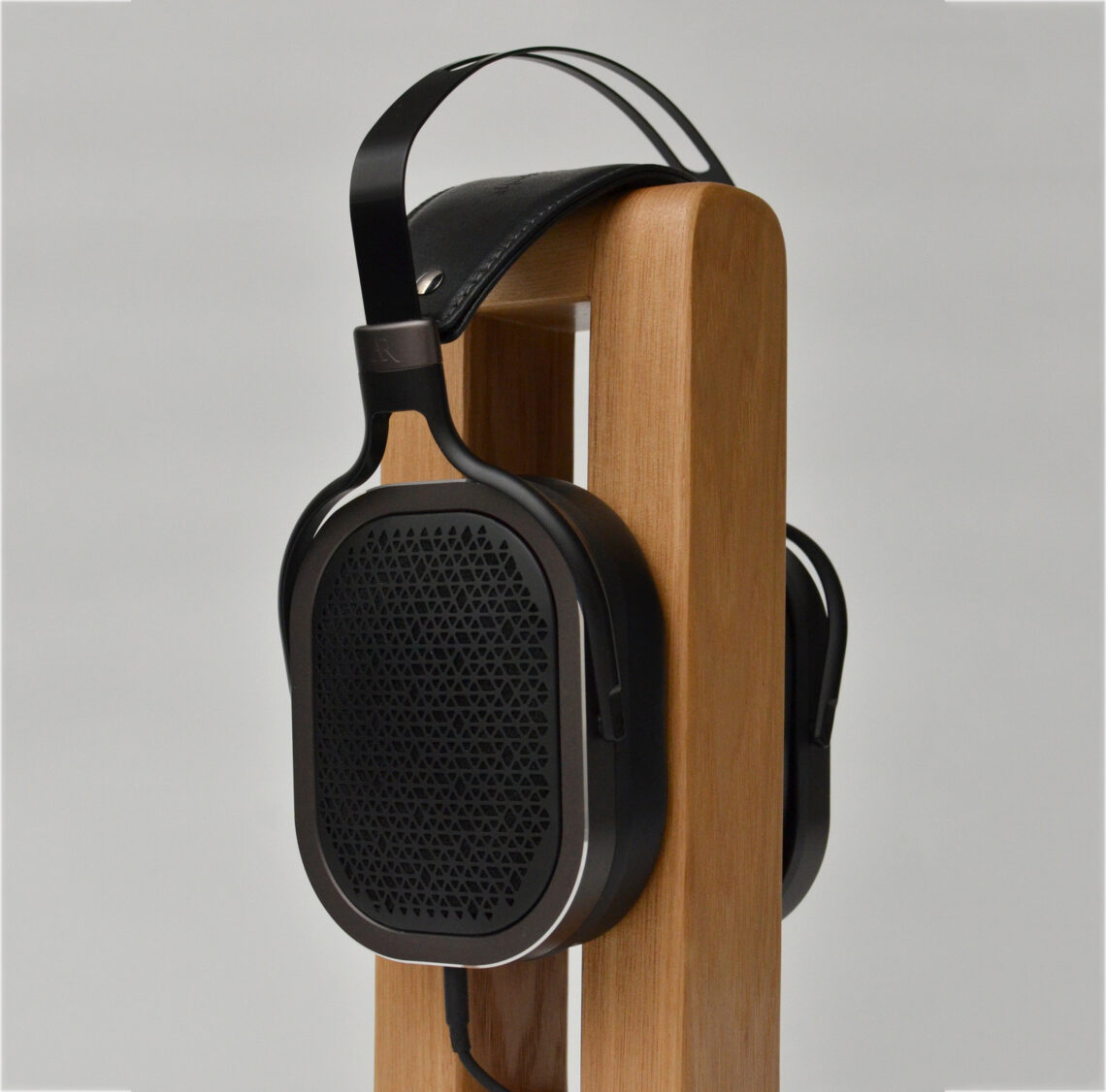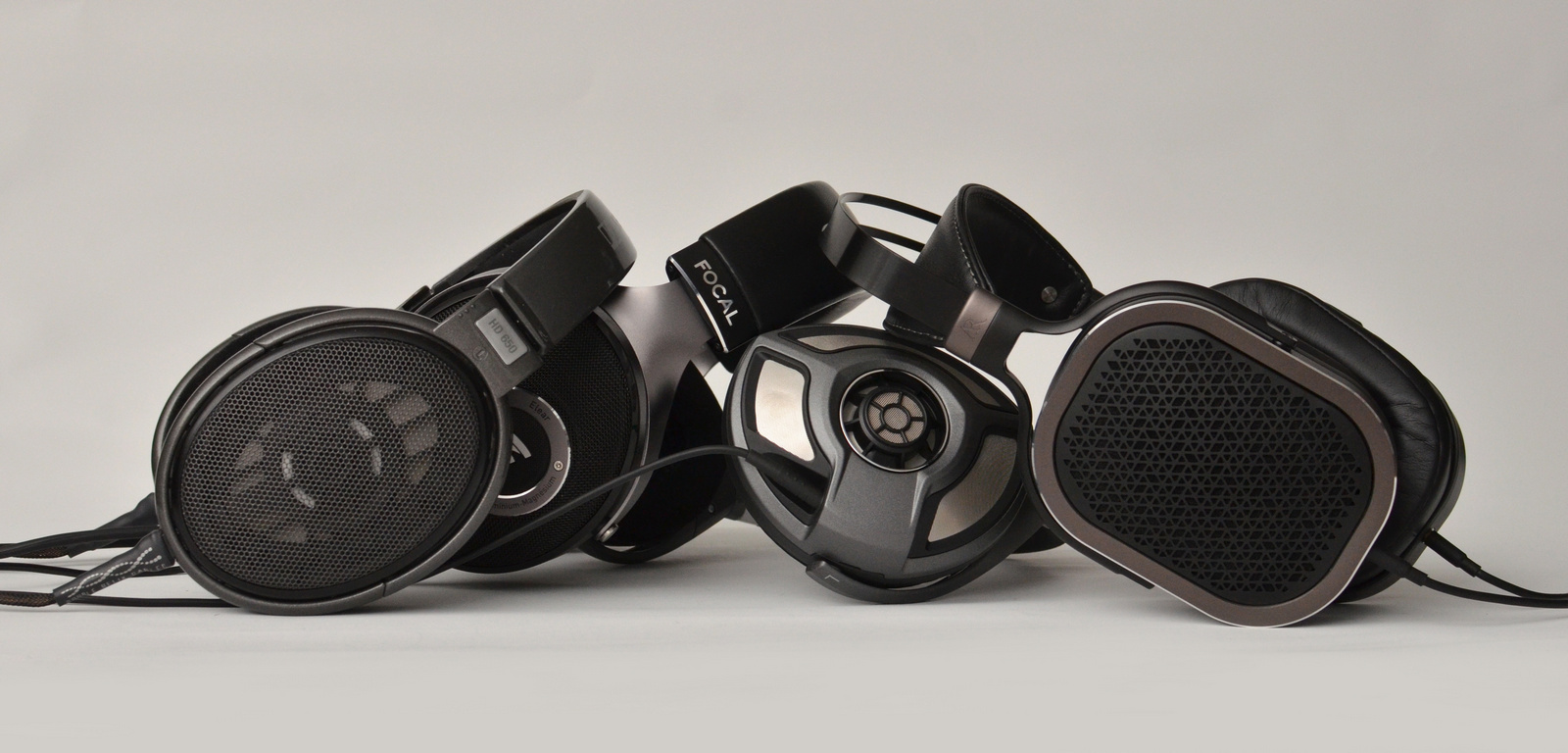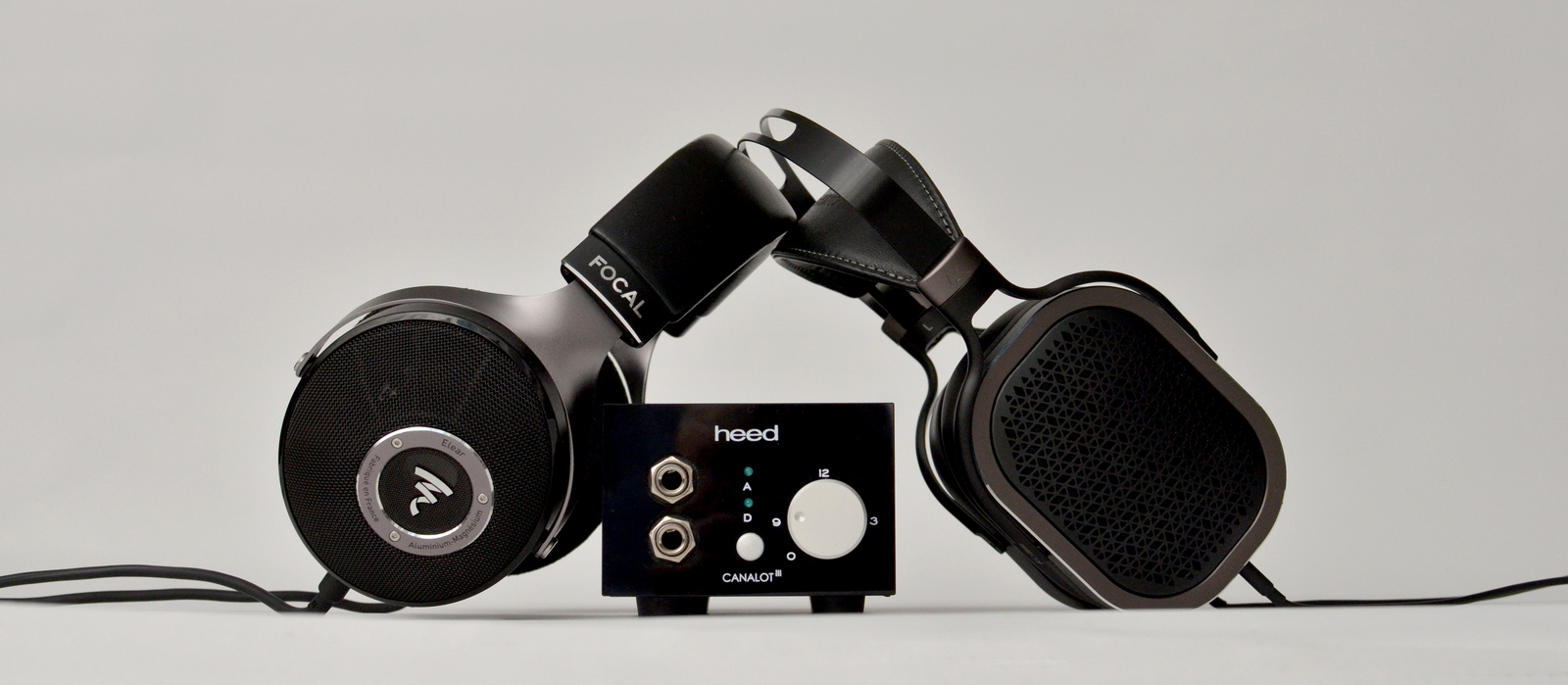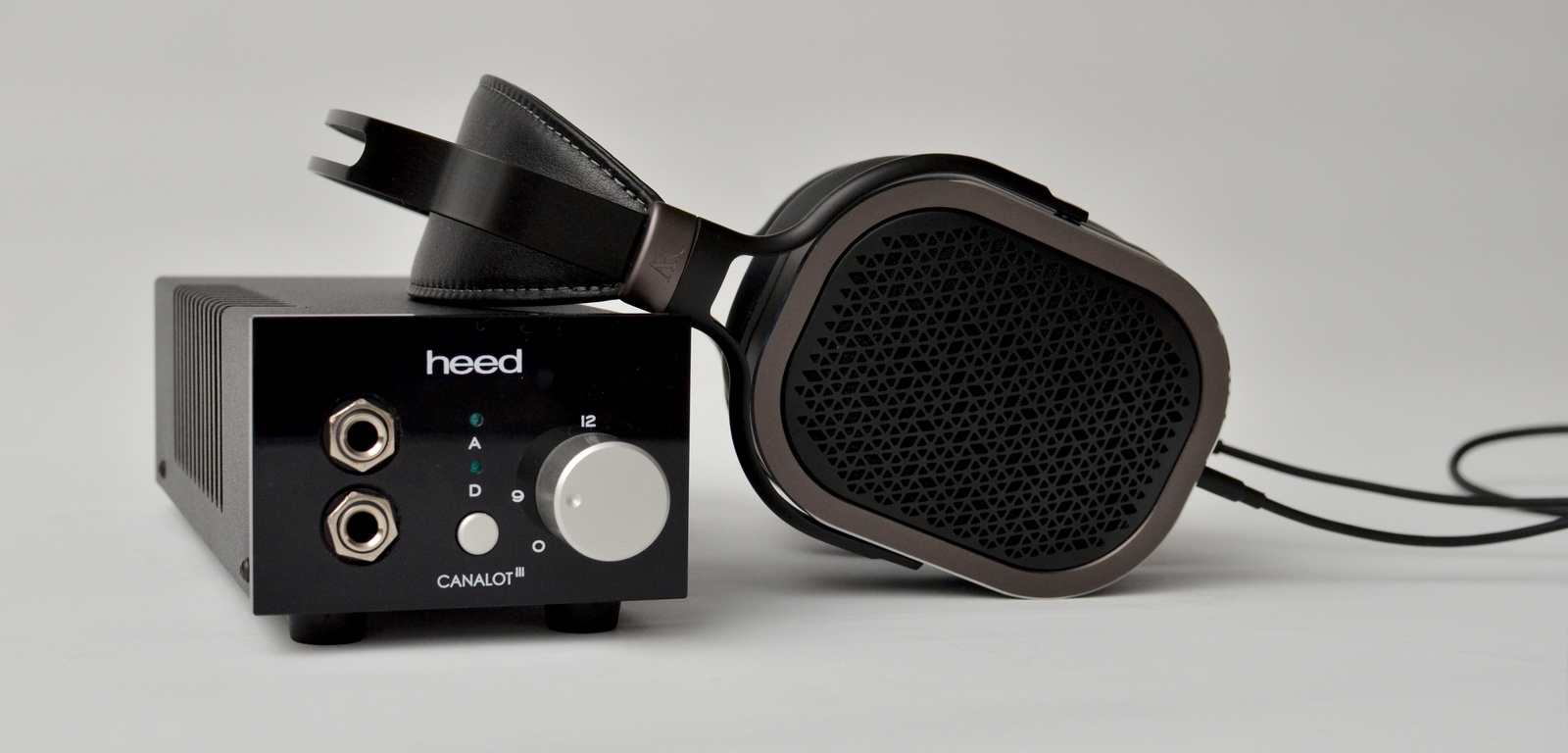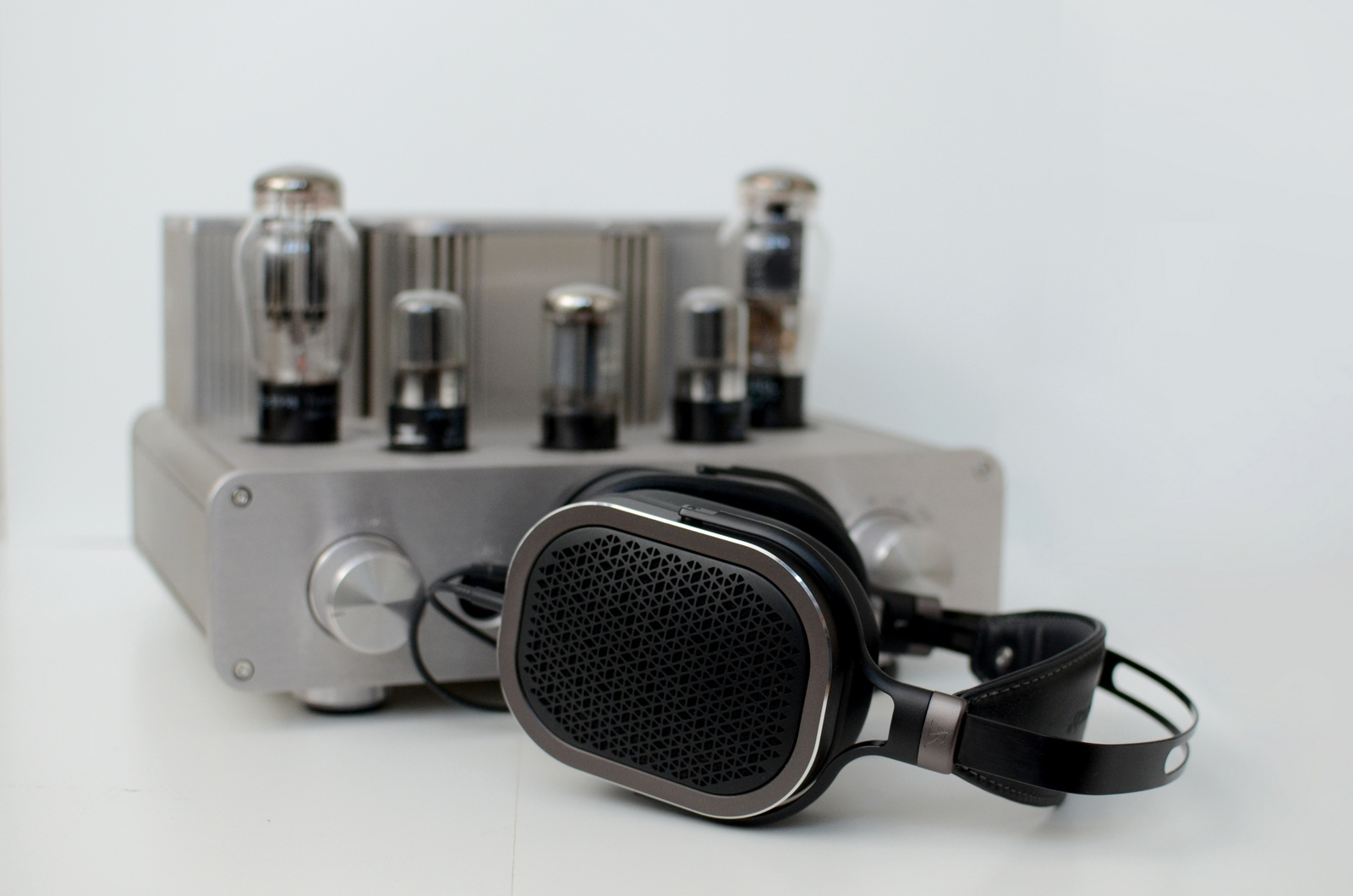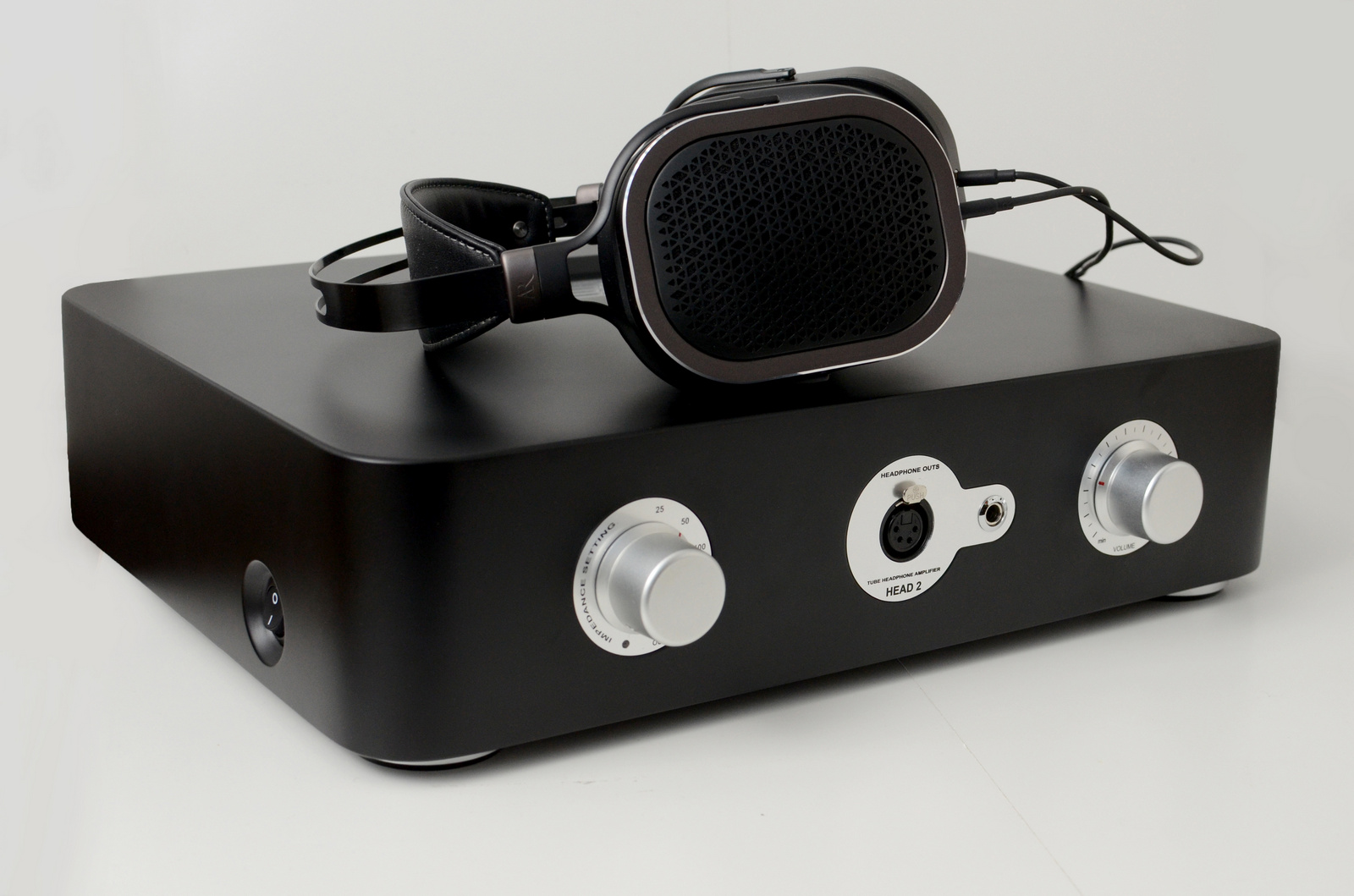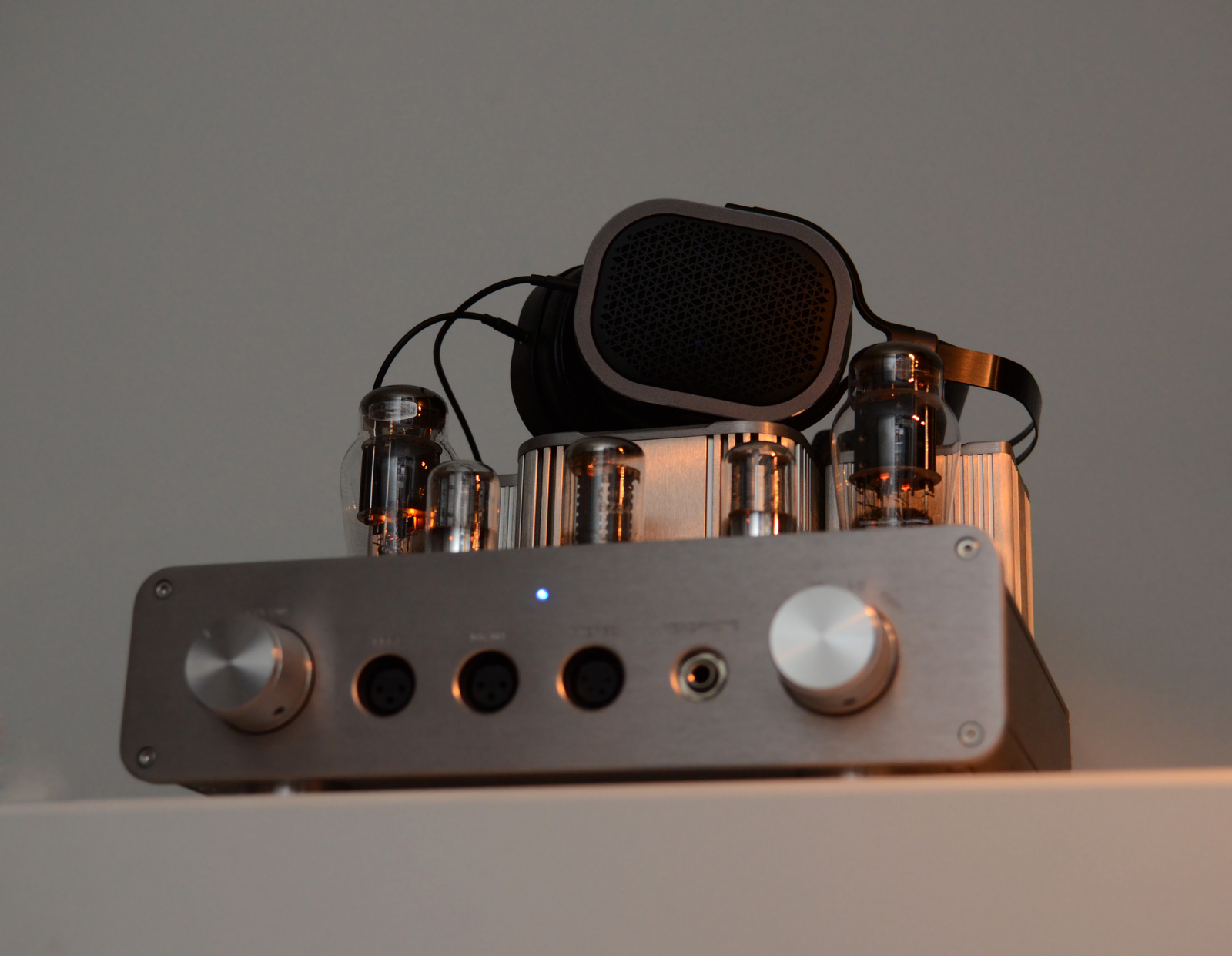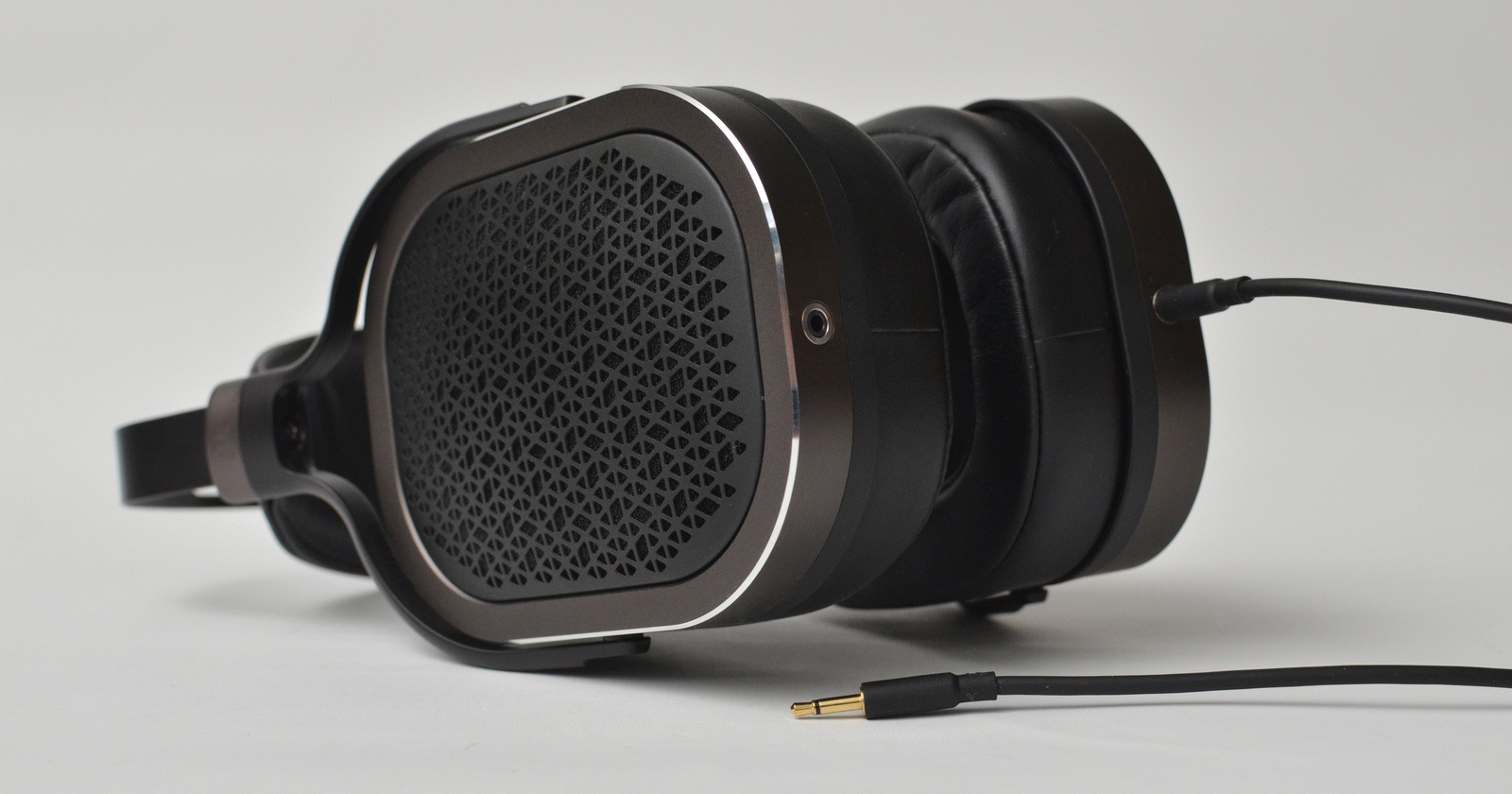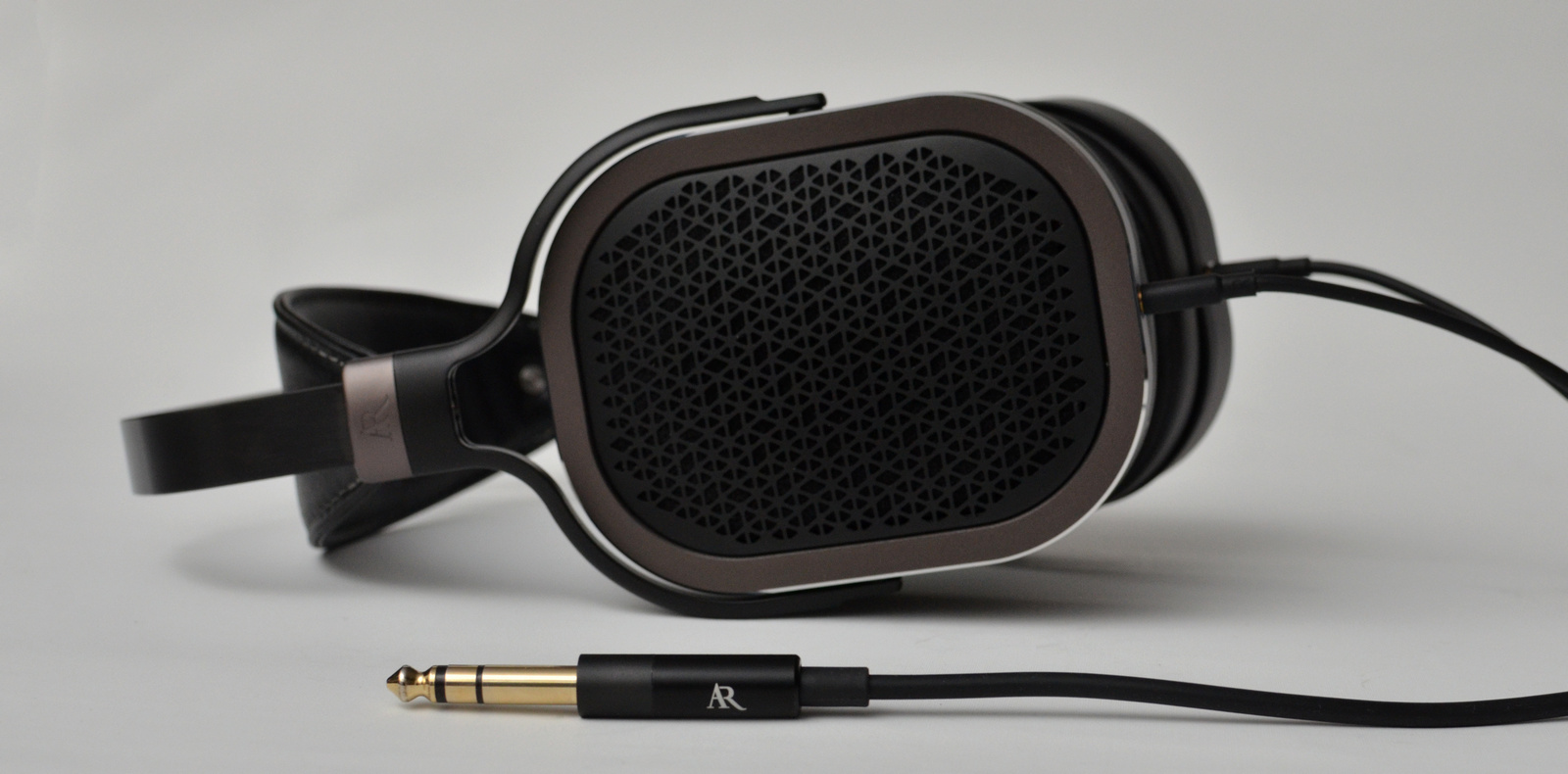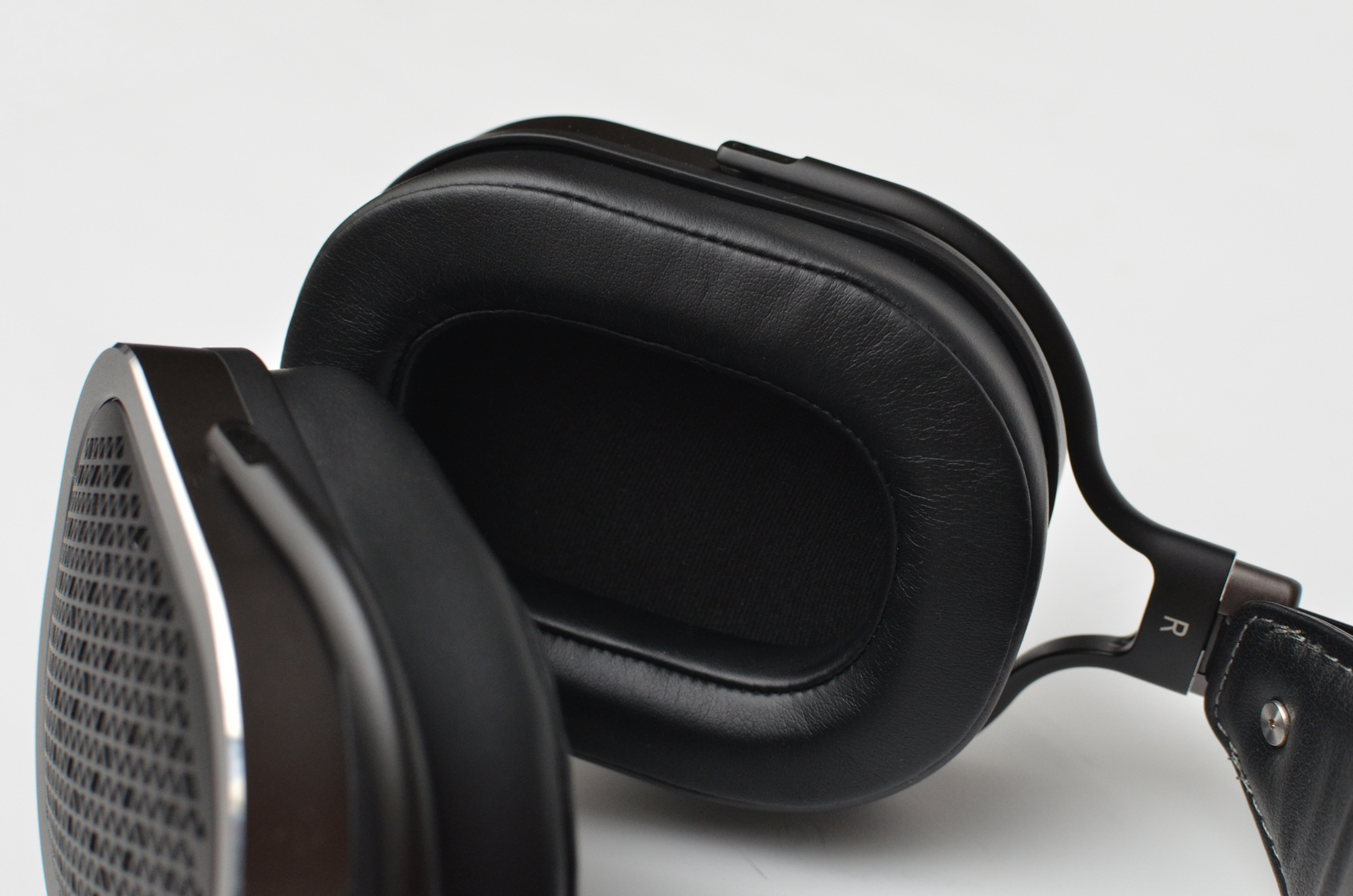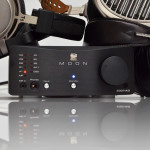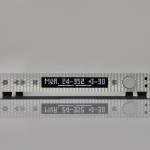Introduction
Acoustic Research is late to the Head-fi party, but it is not a new company. It is an old American brand, mainly known for their speakers. It was bought by the multi-brand consumer electronics company Voxx in 2003 and now focuses on headphones and portable audio players in addition to speakers.
I must admit being a bit sceptic at first, given my unfamiliarity with Acoustic Research. But my scepticism was soon brought to sham. The AR-H1 gave a superb first impression. The build quality seems far above most headphones, regardless of price. They are lightweight and comfortable. The box they come in is quite compact, something I appreciate, tired of all those unnecessarily big and fancy “presentation boxes” that only fill up your closet and are of no use to (almost) anyone.
Sound-wise, I was impressed too. The were open-sounding, engaging and snappy. Even though they have a up-front sound signature, I never was fatigued.
After enjoying them for a while on their own, I started my normal routine of comparisons with relevant headphones and tried it out with various amplifiers.
…with Mytek Manhattan II
Azzaharat – Eple Trio: The AR-H1 feels crisp, clear, detailed, dynamic and neutral. The HD650 also sounds great, but less dynamic and airy. The AR-H1 has more and better deep bass.
Montague Grant – Prins Thomas: The AR-H1 is punchy and snappy. It feels very organic with this track. The HD650 is not in the same league, it lacks the deep bass foundation and speed.
Seven Deadlies – Medeski, Martin & Wood: Here too, the AR-H1 is more open and engaging, with a wider frequency range.
…with Heed Canalot III w/Obelisk PX:
Tonic (album) – Medeski, Martin & Wood: The AR-H1 is warmer sounding with the Heed than the Manhattan, and I like that a lot. It sounds more natural, more “live-performance”-like. It is not necessarily better – but a different flavor. The HD650, on the other hand, sounds speaking significantly better with the Heed than the Manhattan – they are definitely a great match. The gap thus narrows between the two headphones. The AR-H1 is still more open and brighter sounding, but the HD650 sounds great too. Less spacious and detailed, but very engaging on this live jazz album.
Montague Grant – Prins Thomas: This electronica-style percussion-dominated track is definitely AR-H1 territory. Very dynamic, great bass, organic, punchy, snappy. A total delight.
Azzaharat – Eple Trio: The AR-H1 sounds technically superior and more detailed, dynamic and punchy. I love the HD650 here too, but it is obvious that AR-H1 is a better headphone.
… with Questyle CMA800R
Metrics (album) – Stephan Meidell: The AR-H1 is more open, detailed and dynamic, with more space between instruments and more texture. What the HD650 has is a more enveloping feeling, which can be very appealing. But the AR-H1 is generally clerer and cleaner. It pairs well with the Questyle, which has a very slight thickness to the mid-range, which suits the AR-H1 well.
Conclusion: The AR-H1 is faster, snappier, more dynamic and cleaner sounding than the HD650. The HD650 is smoother and more enveloping and has its charm and appeal, especially on less dynamically demanding music. If I owned both, I’d use them both. But the AR-H1 is superior.
AR-H1 vs Sennheiser HD700
… with Heed Canalot III w/Obelisk PX
Gilmanauk – Nils Petter Molvær: The HD700 i s more airy in its presentation than the HD650. But the AR-H1 is even more airy, and has more punch in the bass, more natural treble and generally feels more alive.
Mi Declaration – Vinicius Cantuaria: Both are nice here. The HD700 sounds a bit like a blend of the HD650 and the AR-H1. The AR-H1 is significantly more open sounding. But the HD700 has its charm, it feels more enveloping, like listening to music in a dampened room. Again the bass is deeper and the treble cleaner with the AR-H1.
Montague Grant – Prins Thomas: They are actually not that dissimilar in the opening here. But as the song evolves and gets more treble-intensive, the differences are obvious. The AR-H1 is more present up-stairs, cleaner and snappier.
… with Schiit Asgard 2
Close Your Eyes – Eple Trio: The drums are dynamic and expressive, and the piano is crisp and clear with the AR-H1. Going to the HD700 things get softer. Drums aren’t as energetic, the piano is more toned down. I like the more laid back HD700 presentation too, but the AR-H1 is better – more detail, more air, more dynamics.
Spontanious Compositorius – Thomas Agergaard: I like the HD700 presentation, it is intimate and cozy. The AR-H1 on the other hand, just feels .. pure. The treble is clean and organic, with shimmer and liquidity. The bass is dynamic and reaches deep. The soundstage is open. There is lots of space between instruments.
Conclusion: Compared to the HD700, the AR-H1 is cleaner and more dynamic. The bass reaches deeper, the treble is more organic.
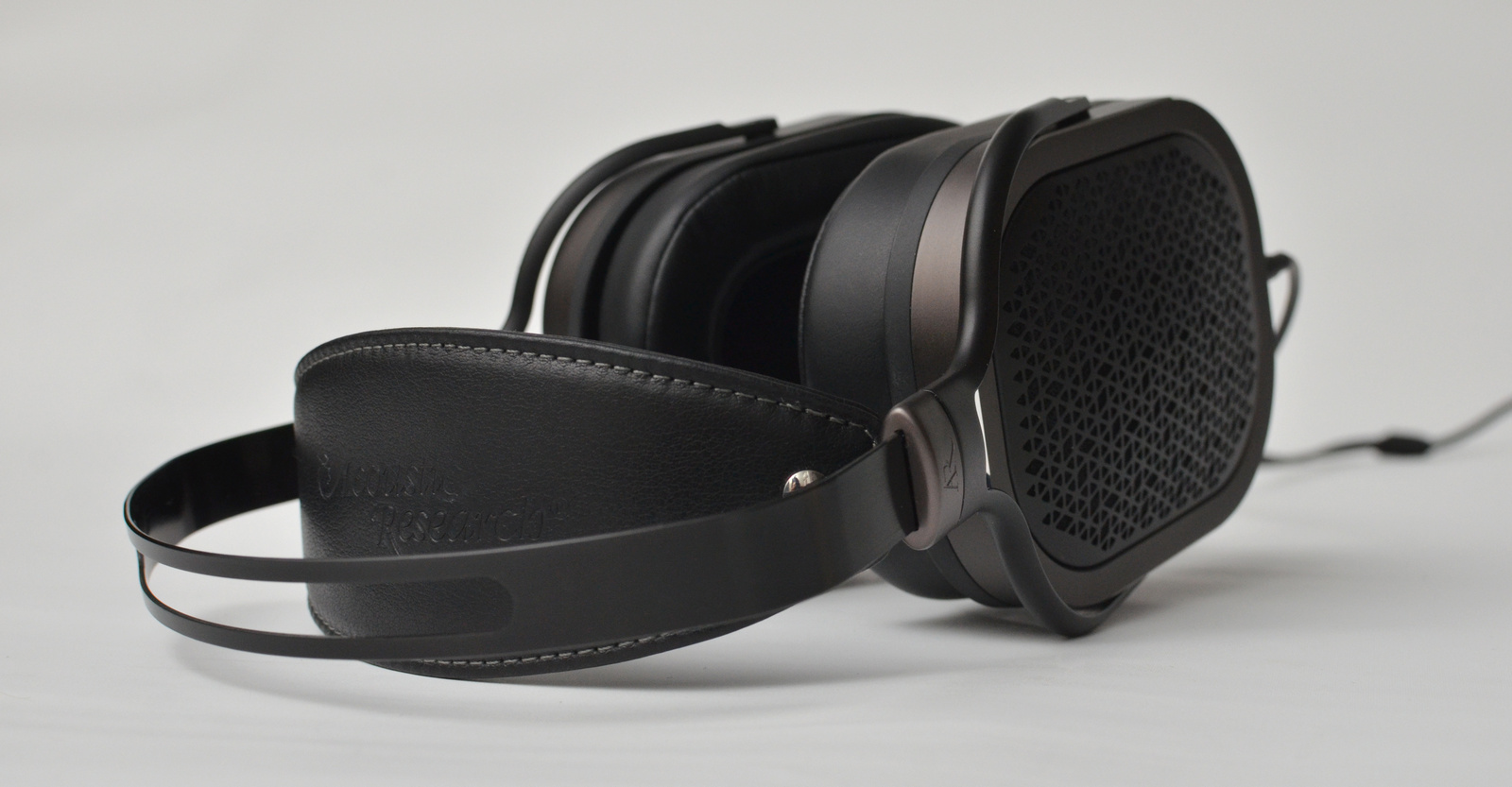
AR-H1 vs Shure SRH-1840
… with Lake People G103P
Spontanious Compositorius – Thomas Agergaard: Coming directly from the Asgard 2, I notice that the G103P is a bit less bright and has a bit more midrange focus. The G103P is a nice amp for the AR-H1, which feels clear and dynamic as always. Going to the SRH-1840, things get a bit less clear and dynamic. Again, as with the HD700, it is nice in a “cozy” way, but the AR-H1 feels superior.
Pink + White – Frank Ocean: Switching directly from the SRH-1840 to the AR-H1 makes it obvious that they are quite different. The SRH-1840 feels less crowded for some reason, but also like it is holding something back from me – in a somewhat pleasant way. But switching between headphones often give that effect – you prefer the “sound-bubble” you have adapted to unless the headphones are very similarly tuned. And sure enough, after a couple of minutes, the AR-H1 is again very nice.
… with Manhattan II
Pink + White – Frank Ocean: Coming from the G103P, the Manhattan immediately feels cleaner and clearer. The difference between the SRH-1840 and the AR-H1 is less prominent with the Manhattan. The SRH-1840 is a bit more forward in the mids, the AR-H1 is definitely better in the bass and cleaner in the treble.
Silhouette – Julia Holter: It is a very nice experience on the SRH-1840. Nice vocals, gentle presentation. But with the AR-H1 it is more open, dynamic and clear.
Fartein Valen, Sontate op.3.1 – Bård Monsen: Feeding the AR-H1 some violin and piano, it sounds good too. The SRH-1840 is less crisp, but also less bright. Some of the high piano tones are hit very hard, and the Shure is a bit more forgiving.
Conclusion: In comparison to the AR-H1, the SRH-1840 has much in common with the two previous Sennheisers. It is softer, less dynamic and is more rounded off at both extremes.
AR-H1 vs OPPO PM-1
… with Manhattan II
04:22 – 1982/BJ Cole: The AR-H1 is more open sounding, but they feel equally detailed. The Oppo is warmer and fuller. The treble region on the AR-H1 feels more pronounced. There is more body and foundation with the PM-1, while there is snappier treble action and openness with the AR-H1.
Pink + White – Frank Ocean: The bass definitely is more pronounced with the PM-1. The AR-H1 is brighter and lighter. I prefer the PM-1, but both are really good once I have adjusted to the sound signature differences.
KORREKTUR HIT
Al Mariyya – Tomatito: This track really sounds great with the very open sounding and crisp AR-H1. Especially the guitars have a crisper and clearer feel to it.
Never Forget the Good Ones: Solveig Slettahjell: The female vocals are very differently rendered by the two headphones. The Oppo is warm and lush, the AR-H1 open and clear. The bass is again more present with the Oppo. They feel equally detailed.
Concluding – the AR-H1 is lighter and crisper, the Oppo is lusher, warmer and with more weight downstairs. Soundstage feel similar.
… with Violectric V200
Going from the Manhattan to the V200, I notice that the AR-H1 feels a bit less bright (but I must add that it was never unpleasantly bright with the Manhattan)
Compare Manuel – Vincente Amigo: This song plays beautifully on both headphones. It is crisp and clear, open and dynamic with the AR-H1. With the Oppo, things get a bit lusher and less crisp. There is more bass presence with the Oppo, more treble presence with the AR-H1. The AR-H1 feels a bit more “busy” for that reason, when there is a lot going on in the upper registries.
Irish Blood – Morrisey: Here, I clearly prefer the Oppo. The treble region gets a bit too much with the AR-H1, the Oppo is much more pleasant. The AR-H1 gets splashy in a not very pleasant way, at least if you turn up the volume a bit. This makes me curious, so I pull out the HD800, and the AR-H1 is still brighter and feels less clean. Going back to the Manhattan II, I notice that the AR-H1 behaves much better, and firing up the Heed Canalot, the AR-H1 gets noticeably softer upstairs. It seems like the V200 and AR-H1 is a sub-optimal match when it comes to splashy cymbals.
Concluding, The Oppo is warm and lush, with more bass. The AR-H1 is crisp and open, with more treble energy. They have similar degrees of soundstage openness, but in different ways. They feel equally detailed.
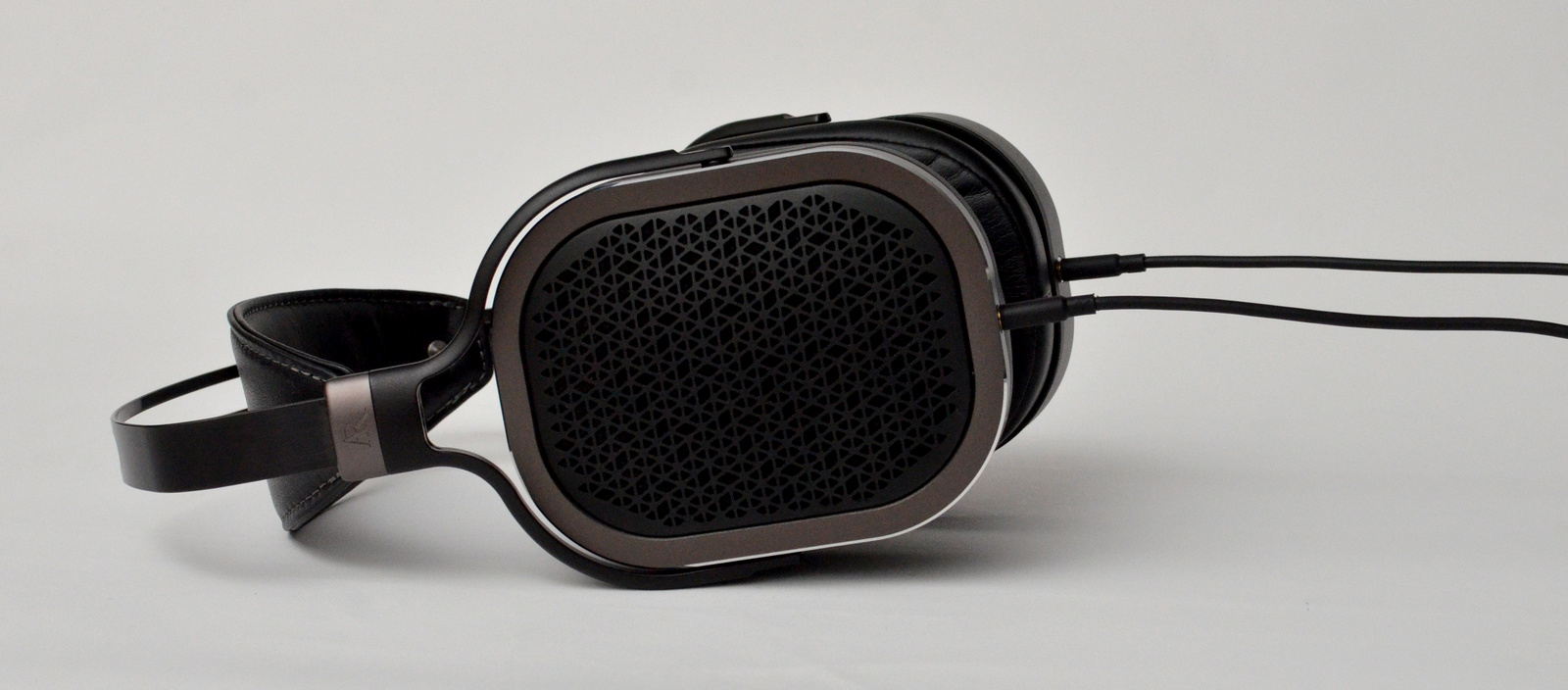
AR-H1 vs Sennheiser HD800
… with Heed Canalot III w/Obelisk PX
Dualist – Ola Kvernberg: The AR-H1 is clean and dynamic. The drums are rendered with conviction, instruments are nicely separated even when the they are trying hard to blend. Switching to the HD800, however, it becomes clear that the AR-H1 is staring to meet some real challenge. The HD800 feels more at ease, more relaxed and significantly more spacious. The AR-H1 feels a bit crowded in direct comparison. It is more up front in the midrange and generally feels more energetic, for better and worse.
Depak Ine – John Talabot: It feels nice and dynamic with the AR-H1. With HD800 things get more relaxed. I feel the upper mid range is significantly more pronounced with the AR-H1. The HD800 is less up front, but still very clear, spacious and dynamic.
… with Manhattan II
Monty Got A Raw Deal – REM: The HD800 is a lot more spacious. Being maybe the most spacious headphone in production, it is not surprising. The AR-H1 has more upper mid-range and lower treble range energy. It is noticeable with cymbals and similar percussion.
Giraffe – BMX: This is a nice modern jazz piece. The saxophone is really something with the AR-H1. Great presence. The HD800 cannot match that. It has the refinement and big stage – but the AR-H1 has a fabulous mid-range intensity. With the AR-H1 you’re on stage, with the HD800 you sit behind the mixing table.
… with Questyle CMA800R
Nevermind – Leonard Cohen: The soundstage is so strikingly larger with the HD800, it is a bit hard to compare directly. Cohens voice is great with both, though. It is more intense with the AR-H1, more refined with the HD800. Again, the AR-H1 feels like being on stage, the HD800 at the mixing table.
Sue – David Bowie: Again – they are very different. Especially the soundstage takes time to adjust to when switching between these two. It is easy to appreciate the insane bubble of headphone space presented by the HD800. But when you have acclimatized, the AR-H1 has an “up-front energy” that also has a great deal of appeal.
Conclusion: The AR-H1 has a totally different soundstage experience from the HD800. It is like being on stage vs behind at the mixing table in a live concert. Or maybe even more different, the HD800 might be more like listening to a well mastered recording of a live concert in a high end hifi rig. They have some similarities, though – they are both rather more pronounced in the treble than in the bass. The AR-H1 has more mid-range intensity. They both worked well with the amplifiers I used.
AR-H1 vs Hifiman HE-500
… with Questyle CMA800R
The AR-H1 has been reminding me of a bass-light version of the HE-500 during my listening sessions, and when I finally pull the Hifiman out of the drawer, I am relieved to observe that I my memory didn’t fool me. They are indeed very similar in many ways, but far from identical.
Mississippi Ringing . Floratone: The HE-500 has a bit more boomy bass, the AR-H1 has a clearer midrange and sounds quite a bit more open, clear and crisp. Soundstage is similarly intimate.
Cellophane – Metz: Nice mid bass warmth on the HE-500 with this quite noisy punk rock track. Switching to the AR-H1, the focus in the frequency range shifts to the upper midrange. Things feel less muffled with the AR-H1.
Mi Decleration – Vincius Cantuaria: This sounds great on the AR-H1. Bass is deep and textured. Guitar and voices are crisp and live sounding. It sounds great on the HE-500 too, but a bit different. More mid-bass, less treble presence.
Concluding, the HE-500 and AR-H1 present a similar soundstage but the HE-500 has a more prominent mid bass, while the AR-H1 is clearer, crisper and feels more dynamic.
AR-H1 vs Beyerdynamic T1 mk2
… with Heed Canalot III/Obelisk PX
Mi Decleration – Vincius Cantuaria: The AR-H1 comes off as more up-front in the mid range, a bit warmer, wit a more intimate soundstage. But these headphones are not the least similar in this test. They have somewhat similar amount of bass presence. The T1 is more refined sounding, but the AR-H1 has great presence and great texture to the instruments. It is easier to appreciate the T1’s sense of refinement, but the raw presence and up-front presentation is also very appealing.
AR-H1 vs Focal Elear
… with Heed Canalot III/Obelisk PX
Sack Full of Dreams (Live) – James Carter: Great with the AR-H1. Spacious and refined. Very live feeling. Switching to the Elear, I immediately notice that the midrange gets a bit drawn back. Things feel a bit more refined, with a bit better separation. But the up-front presentation of the AR-H1 is really fun. The Elear digs deeper in the bass and feels more neutral and balanced.
Pink+White – Frank Ocean: Deeper bass with the Elear, more up-front vocals with the AR-H1. Both are good, but the Elear feels cleaner.
Concluding, the significantly more expensive Elear feels cleaner across the range, more spacious and has a deeper bass range. But the AR-H1 holds up well, and continues to impress, especially with its dynamic playstyle and mid-range presence.
AR-H1 vs Audeze LCD.2 rev.1
(With the Heed Canalot)
Three Madrigals for Violin and Viola Op.H 313 – Martinů – Emerson String Quartet: My beloved LCD-2 rev.1 is more open sounding, and also more neutral. The AR-H1 has more bite in the lower treble/upper midrange. This adds some intensity, but also makes it sound a bit rawer compared to more refined headphones like the LCD-2.
Irish Blood, English Heart – Morrisey: Again, the LCD-2 is more refined and balanced sounding. The cymbals that start after 44 seconds gets a bit splashy with the AR-H1. The tendency to get a bit splashy is its main weakness.
Nevermind – L.Cohen: This track has few instruments and less complexity, and this suits the AR-H1. The presence it gives Cohen’s voice is really great. Both headphones are snappy and detailed. The AR-H1 has a less spacious presentation.
i Declaration – V. Cantuaria: As good as I often find the AR-H1 to be in the bass, the LCD-2 shows its superiority. But the AR-H1 is no slouch at all, and it has a vocal presentation that really is something special.
AR-H1 vs DT1770PRO
(With the Heed Canalot)
Mi Declaration – V. Cantuaria: The DT1770PRO sounds very clean. There is lots of space between instruments. The AR-H1 is more up front and direct, again the presence in the upper mids/lower treble is more pronounced – especially noticeable with the continuous percussive elements. I like both presentations, but the AR-H1 is significantly busier sounding.
Sue – David Bowie: The AR-H1 renders the bass in a textured and tight way. It feels both deeper and tighter than on the closed back DT1770PRO, but not less prominent. The general presentation is also more to my liking with the AR-H1, it is more immediate.
Sordid Affair (Watermat Remix) – Röyksopp: It is nice, tight and punchy with the AR-H1. With the DT1770PRO, things are more polite across the spectrum. Still good, but different and not as engaging to my ears.
AR-H1 vs Audeze EL-8 Closed
(With the Heed Canalot)
Summer – Mogwai: The AR-H1 feels more balanced, warmer and more inviting than the EL8 Closed back. Bass is more pronounced and deeper reaching, treble cleaner and more liquid.
Ragged Wood – Fleet Foxes: Same thing here, the AR-H1 is much better. They have similar soundstage, but the Audeze feels cold and flat in direct comparison.
Compare Manuel – Vincente Amigo: There is more warmth and presence with the AR-H1. The bass is deeper and is more pronounced. The treble is more organic. The EL-8C sounds a bit flat and dull, to be frank.
Violin Concerto in D Minor, RV 813: III. Allegro – Adagio – The Young Vivaldi: Here too, the AR-H1 is more inviting, more organic and present.
AR-H1- Amplifiers Comparisons
Questyle CMA800R vs Heed Canalot III w/Obelisk PX
En Casa Del Herrero – Tomatito: The Heed combo might be a bit warmer in the midrange, but they are quite similar
Gilmanauk – Nils Petter Molvær: They are quite similar.
Never Forget The Good Ones – Solveig Slettahjell: The velvety midrange of the Heed is giving it an advantage here.
Viuxtemps – Violin Concerto No.4, Op 31 – Mozart/Hilary Hahn: The Heed gives more life to the midrange, it feels more alive than the Questyle. Both are good, but I prefer the Heed.
Ragged Wood – Fleet Foxes: Both are good and they sound very close, but I tend to prefer the Heed.
Questyle CMA800R vs Heed Canalot III w/X-PSU 40
The Canalot can be used with several PSU’s. The X-PSU is the standard power supply that ships with the Heed Canalot. The Obelisk PX is actually from another product range, and costs more than the Canalot, and is a bit overkill. The obvious upgrade power supply from Heed is the Q-PSU – which also has the same form factor as the Canalot. I have not tested the Q-PSU, but can assume that it performs somewhere in between the X and the Obelisk PX.
Gilmanauk – Nils Petter Molvær: I feel the Heed is a bit rounder and slightly less clear sounding with the X-PSU, but still I really like it and would not say the AR-H1 sounds inferior with the Canalot compared to the now significantly more expensive Questyle.
Viuxtemps – Violin Concerto No.4, Op 31 – Mozart/Hilary Hahn: I still prefer the Heed, even with the X-PSU.
Midnight City – M83: The Heed is a bit fuller, the Questyle a bit cleaner.
Conclusion: Both the Questyle and the Heed is excellent with the AR-H1, but I tend to prefer the tonality of the Heed, it has a bit of that extra midrange presence that really excels with the AR-H1. Not that the Questyle has a lacking midrange presentation, but it is a bit drier. Not a big difference, but considering the price difference (when using the standard X- for the Heed Canalot III) it is hard to beat the Heed. Basically, I found the differences between the two PSU’s for the Heed to be small and subtle with he AR-H1.
Mytek Manhattan II
I’m not doing any track by track comparisons, but having spent a lot of time with the Mytek and the AR-H1 I can say that it really is an excellent match. The Mytek is, as the Questyle, a bit drier sounding than the Heed, but presents a bit more detail. It is natural, smooth, dynamic and balanced sounding. I personally wouldn’t see any reason to consider an external amp for the AR-H1 if you already have the Mytek.
Lake People G103P vs Heed Canalot w/X-PSU
Mi Declaration – V. Cantuaria: The little G103P really sounds great with the AR-H1. It is full and dynamic sounding. Great bass. Nice soundstage depth. Actually my first impression is so good that I do not expect much improvement when going over to the Heed. But things get different, and better. There is better separation and more liveliness and detail.
Never Forget the Good Ones – Solveig Slettahjell: The G103P is very nice, but the Heed has more presence in the mid range, with better clarity and precision. It feels more alive, there is more texture and timbre. I really like the G103P, but it is not as good as the Heed.
Midnight City – M83: The music sounds a bit tidier with the Heed, but this is the track where the G103P might feel most subjectively equal, it has a nice smooth tonality which suits this song quite nicely.
Concluding, the G103P is a really good amp for the AR-H1 considering the price, but the Heed Canalot III is significantly better. It is more dynamic, precise and generally more alive sounding.
Lake People G103P vs Schiit Asgard 2
Small Town – Bill Frisell: The gentle electric guitar and acoustic bass are presented with a vibrant touch by the Asgard 2. Going over to the G103P, the instruments get a bit flatter sounding, but still nice.
Mi Declaration – V. Cantuaria: The G103P is very nice, a bit warm and enveloping. The Asgard 2 is crisper and more pin-pointed, it feels more precise. The Asgard is more up-front, the G103P more laid back.
Army of Me – Björk: Again, there is more sparkle with the Asgard, more air and more presence. But I like the laid back sound of the Lake People too.
Schiit Asgard 2 vs Heed Canalot III
Pledge for Peace – Chick Corea: Moving from the already good Schiit to the Canalot gives a cleaner and punchier sound.
Mi Declaration – V. Cantuaria: The bass in the opening is softer and less defined with the Schiit. Vocals are more open and crisp sounding with the Heed, the same goes for the percussion. Generally, the Heed is prefered by a good margin.
Army of Me: Björk: The Schiit brings Björk’s voice more up front, in a nice way. Otherwise, the Heed is better at everything.
Never Forget The Good Ones – Solveig Slettahjell: The Schiit is a bit fatter, but it doesn’t add anything desirable. It is good, but the Heed is full sounding enough. But both are doing a good job.
Woo WA22 vs Heed Canalot III w/X-PSU
After I finished my planned amplifier comparison rounds, I hooked up the Woo WA22. i had previously tried the Leben CS300XS, but didn’t find it much different from the Heed. But the Woo just wowed me. The AR-H1 sprung to life at a new level. Thus I had to do a comparison with the Heed Canalot (with the standard PSU)
Tabula Rasa: 1 – Ludus – Arvo Pärt: This is mostly strings. They sound more alive and organic with the Woo. The strings feel more vibrant. The Heed is good too, but the Woo is really something special.
Feela/Cotton Wool (Fila Brazilia Mix) – Lamb: The amps sounds similar, except the Woo just has this extra sense of organic liquidity. It really tickles your eardrums, in a way I have not heard any other amp handle the AR-H1.
Older – Band of Horses: There is more liveliness to both vocals and guitars. Soundstage is more open and wide,too.
Cold Earth – Boards of Canada: Again, the Woo is really great. It is more playful and alive sounding.
I tried out the Heed with the big Obelisk PX power supply too, and even though it improves quite a bit, especially on soundstage imaging and separation, the Woo WA22 has that organic liquidity, that playful sound that just makes me smile.
Trafomatic Head 2 vs Woo WA22
At the time I was finishing this review, someone happened to drop by with a Trafomatic Head 2. First thing I did was of course to plug in the AR-H1, and it sounded fabolous. But was it even more fabulous than the WA22? I had to do one final comparison.
Mi Declaration – V. Cantuaria: They are both really great. The Head 2 is way better (relatively speaking..) than any of the solid state amps I tried. The WA22 sounds even more alive than the Head 2, but the Head 2 feels more neutral.
Vieuxtemps: Violin Concerto No.4 In D Minor, Op.31 – 2. Adagio religioso – Moazart/Hilary Hahn: The Head 2 is more full bodied, a bit more detailed and natural. The WA22 is a bit thinner and sharper sounding.
Terminal 7 – T.Stanko: Stanko’s trumpet is really something with the WA22, it jumps out of the AR-H1, wonderfully alive. It is a bit more polite with the Head 2, but that doesn’t make it less enjoyable. Although, the WA22 is wonderfully detailed, there is something about the Head 2 that makes me feel it is a tad cleaner sounding.It also has more bass weight.
It is hard to pick a winner between these two great tube amps. They are both excellent with the AR-H1, which really seems to shine with great tube amplification. The Woo is more lively and mid-centric, the Head 2 more neutral and has a bit more fullness in the lower regions. Both have great levels of detail, separation, a great soundstage and wonderful dynamics.
Amplifier Conclusion
The AR-H1 excels with amps that have some extra mid-range body, but it doesn’t depend on it. Frankly, I found it to sound quite good on all amps, but some amps seems to make it sound a tad splashy and a bit unbalanced in the mids. The best solid state amp l I have tried, is the Heed Canalot. It adds some extra midrange warmth and body to the AR-H1, while not compromising on detail and dynamics.
Before I tried the Woo WA22, I was going to conclude that the AR-H1 doesn’t scale much with regards to amplification after a certain point. But the WA22, and later the Trafomatic Head 2, just brought them to another level, at least in my ears. The gap to significantly higher priced headphones narrows when plugged into one of these great tube amps.
Conclusion
Build and comfort
The AR-H1 is first of all an extremely well built headphone. Most high end headphones are flimsy and rather uncomfortable in comparison. The AR-H1 sets a new standard. The cable is a bit short for home use, but luckily it has 2.5 mm standard plugs and you can easily get other cables.
Sound
The sound quality is something special. The AR-H1 puts you right into the music, it gives you an alive, “on-stage” experience. They are very detailed and fast sounding, with a lively and dynamic playing style. The soundstage is open, but intimate.
All through my review I kept calling the AR-H1 “snappy”. This is especially noticeable in the lower regions. It is not a bass monster, it is certainly quality over quantity. The midrange is lively and up front, but it depends a bit on the amplifier how much weight it gets. The treble is also snappy and organic.
Even though the AR-H1 can feel a bit bright, I never found it fatiguing, as I can do with similarly tuned headphones. There is a slight tendency to be splashy in the upper mids, typically with cymbals.
Value:
Roughly speaking, the AR-H1 seems to be better than the less expensive headphones I have compared it to, and less refined than significantly more expensive ones. The USD 699 price point hasn’t been too crowded lately but the recently launched Hifiman Sundara and Audeze LCD-2C will certainly compete for attention.
Amplification
The AR-H1 is not especially easy to drive. But it sounds decent with my Samsung S7 on almost full volume. With my Macbook Air it sounds surprisingly good at 60-70 % volume. I would be quite happy with that sound for semi-portable use. However, it needs an amp to sound really good.
As for desktop amps, I found the AR-H1 to run well with most of them, but it certainly shines more when paired with an amp that gives it some extra midrange body, and it definitely got to another level with the two big tube amps.
Pros
Great, tight bass, detailed, snappy and alive sounding. Fabulous build quality.
Cons
A tendency to occasional splashiness depending of music and amplifier. Soundstage is rather small. Short cable.
MANUFACTURER SPECIFICATIONS:
Open back circumaural design
86mm planar driver with NdFeB magnet array
Genuine leather headband
Low resilience ear cushion
Interchangeable headphone cable
Frequency response: 10 to 60kHz
Sensitivity: 99dB/V
Impedance: 33 ohms •
Weight: 397 g
Included accessories: 1.2m Audio Cable (Symmetric 3.5mm 3-pole to dual 2.5mm 2-pole), 6.3mm Plug Adapter, Soft pouch.
.


